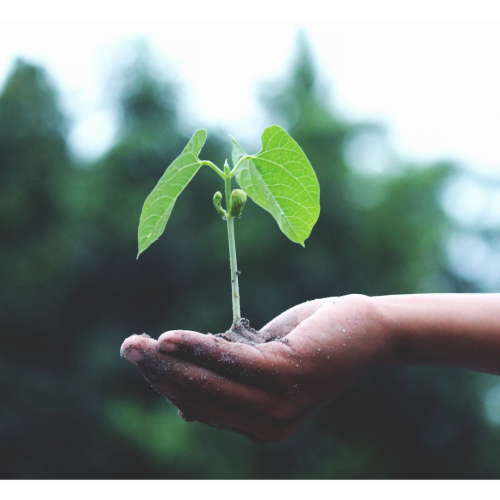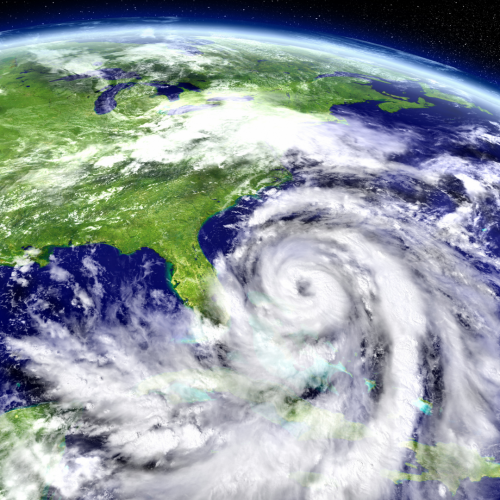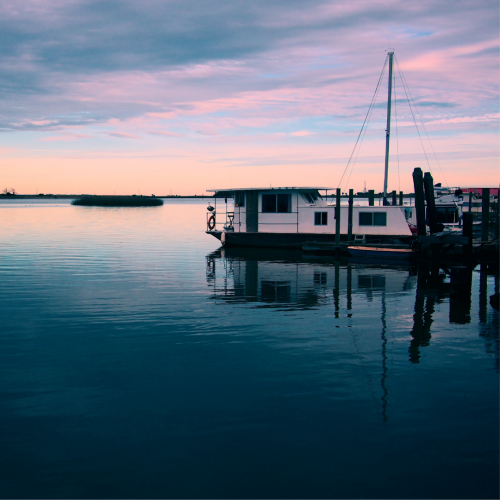To pair with the rest of our educational content in each Earth to Florida newsletter, we bring you monthly updates on statewide environmental news. Read on below to see what we found for the month of April:
 On April 22, Floridians are planning to celebrate Earth Day in a variety of ways across the state. For example, in northwest Florida, community members can help restore the longleaf pine habitat, which has been decimated to less than 5% of its original range in that area. Do you need ideas for how to celebrate the day in your own way? Consider transforming some of your lawn into natural areas that require less care and store more carbon than grass. Now that spring has arrived, it’s also the perfect time to plant native milkweed – the only host plant of the endangered monarch butterfly. And although Gopher Tortoise Day (April 10) has passed, you can always take steps to protect gopher tortoises and their burrows in your yard.
On April 22, Floridians are planning to celebrate Earth Day in a variety of ways across the state. For example, in northwest Florida, community members can help restore the longleaf pine habitat, which has been decimated to less than 5% of its original range in that area. Do you need ideas for how to celebrate the day in your own way? Consider transforming some of your lawn into natural areas that require less care and store more carbon than grass. Now that spring has arrived, it’s also the perfect time to plant native milkweed – the only host plant of the endangered monarch butterfly. And although Gopher Tortoise Day (April 10) has passed, you can always take steps to protect gopher tortoises and their burrows in your yard.- When planting a small, immature tree, it can be hard to imagine its height and spread once it reaches maturity. When these trees are planted underneath power lines, this can create problems in the future – even power outages. To prevent these electrical issues and safety hazards, make sure you research how tall your tree will grow before placing it near a power line.
 Florida is known for its juicy, flavorful oranges – but now, the state’s production of the fruit has dipped below California’s amidst struggles within the industry. At 51.7 million 90-pound boxes of oranges, Florida’s latest forecast projects the state’s production will be 300,000 boxes short of California’s forecast. If fulfilled, this means that this year’s season will produce 23% fewer oranges than last year’s. Researchers credit this decline to the citrus greening disease, increased development, foreign imports and hurricane impacts.
Florida is known for its juicy, flavorful oranges – but now, the state’s production of the fruit has dipped below California’s amidst struggles within the industry. At 51.7 million 90-pound boxes of oranges, Florida’s latest forecast projects the state’s production will be 300,000 boxes short of California’s forecast. If fulfilled, this means that this year’s season will produce 23% fewer oranges than last year’s. Researchers credit this decline to the citrus greening disease, increased development, foreign imports and hurricane impacts.- Since 1991, sea turtles from North Carolina to Florida have been protected from dredging by seasonal limits, which restrict dredging activities to the months outside of nesting season. But now, these restraints might be lifted, with officials saying they want to protect other marine species and alleviate project delays. Environmental advocates claim that’s not worth the estimated annual 150 deaths sea turtles would endure by dredging. Other conservation groups have filed a lawsuit against the National Marine Fisheries Service over a 2019 rule change that allowed some commercial fishing materials to not feature “turtle-excluder devices” in the Gulf of Mexico. These escape hatches, which would prevent an estimated 1,300 turtle deaths, were previously required on most shrimp nets for decades. This news comes as turtle nesting season is off to an early start across Florida.
- After a record-breaking hurricane season last
 year, new forecasts predict a similarly turbulent one this year. Colorado State University expects an above-average season with at least 17 named storms, an estimated eight of these could become hurricanes, with four intensifying to major hurricanes. A similar prediction was made by AccuWeather, who estimates 16 to 20 named storms to form, with seven to 10 becoming hurricanes, and three to five powering up to major Category 3 storms. If these estimates prove true, the 2021 season would represent the sixth above-average season in a row, which is prompting the National Hurricane Center to shift its baselines.
year, new forecasts predict a similarly turbulent one this year. Colorado State University expects an above-average season with at least 17 named storms, an estimated eight of these could become hurricanes, with four intensifying to major hurricanes. A similar prediction was made by AccuWeather, who estimates 16 to 20 named storms to form, with seven to 10 becoming hurricanes, and three to five powering up to major Category 3 storms. If these estimates prove true, the 2021 season would represent the sixth above-average season in a row, which is prompting the National Hurricane Center to shift its baselines. - The Florida House passed a bill with expansive measures toward the battle against climate change. It allows $100 million to be spent on sea level rise and resiliency projects every year, creates a grant program for local governments, and calls for statewide flooding and sea level resiliency plans. But as this legislation heads to Gov. Ron DeSantis’ desk, another more controversial bill was also passed: $222 million that was once awarded for affordable housing projects is now going to sea level rise efforts and sewage treatment projects. Opponents say this bill unnecessarily cuts funding for affordable housing in half when other resources could be put toward climate change mitigation.
- After Florida’s first chief science officer left his position, Gov. Ron DeSantis appointed a new one in his wake: Mark Rains, the director of the University of South Florida School of Geosciences. A scientist and ecohydrologist, Rains will undertake Florida’s continuing problems with algae blooms and pollution at the intersection of science and politics.
 The U.S. Supreme Court has unanimously rejected a lawsuit in which Florida argued that Georgia has used too much water in the Apalachicola-Chattahoochee-Flint river system shared by the states. Florida argued that Georgia was using too much water to irrigate their crops, causing downstream damage to the Apalachicola River and the bay. However, Georgia maintained that the damage was caused by the overharvesting of oysters after the 2010 Deepwater Horizon disaster sent oil spreading through the Gulf of Mexico.
The U.S. Supreme Court has unanimously rejected a lawsuit in which Florida argued that Georgia has used too much water in the Apalachicola-Chattahoochee-Flint river system shared by the states. Florida argued that Georgia was using too much water to irrigate their crops, causing downstream damage to the Apalachicola River and the bay. However, Georgia maintained that the damage was caused by the overharvesting of oysters after the 2010 Deepwater Horizon disaster sent oil spreading through the Gulf of Mexico.- Yet another invasive species has been discovered in Florida; this time, it’s a frog that has claws. University of Florida scientists have confirmed that the tropical clawed frog has been found in the Tampa Bay area, though they haven’t yet determined whether it is likely to spread to other parts of Florida. The species, which is native to West Africa, may outcompete native frog species for food resources.
- A unique new museum will open next summer in St. Johns County. The Vector Disease Education Center and Science Museum seeks to educate Floridians about mosquito habitats and life cycles, as well as information about other insects like butterflies and beetles. The education center will include interactive attractions for all ages, such as an indoor beehive, live insects, models and interactive displays.
- Researchers at the University of Florida are helping park managers combat poaching. After analyzing 10 years of poaching data, the researchers developed new decision-making tools that will help rangers plan patrols more strategically across the hundreds or thousands of square miles that require oversight in protected conservation areas and parks.